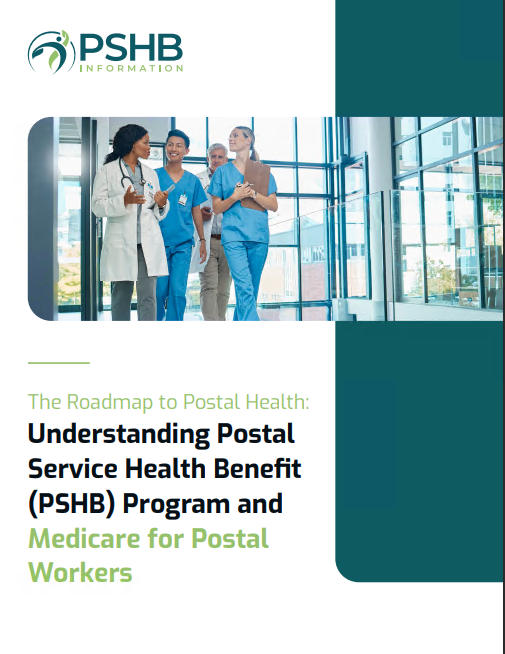Key Takeaways
-
Coinsurance costs can be unpredictable, often catching USPS employees off guard when planning for medical expenses.
-
Understanding how coinsurance works and factoring it into your budget can help you avoid unexpected out-of-pocket costs.
How Coinsurance Adds Up Faster Than You Expect
Coinsurance is one of those sneaky healthcare costs that can take you by surprise. As a USPS employee, you have access to health coverage under the Postal Service Health Benefits (PSHB) program, but even with insurance, you’re still responsible for a portion of your medical expenses. Coinsurance refers to the percentage of costs you pay for covered healthcare services after meeting your deductible. While it may seem like a small percentage at first, it can add up quickly depending on the medical care you need.
Here’s how coinsurance costs might catch you off guard—and what you can do to be prepared.
1. High-Cost Medical Services Add Up Quickly
-
Coinsurance is often a percentage rather than a flat fee, meaning the more expensive the procedure, the more you owe.
-
Major medical treatments, hospital stays, and specialist visits can quickly push your out-of-pocket costs higher than expected.
-
If you require multiple procedures or ongoing care, coinsurance can accumulate significantly over time.
How to Prepare:
-
Review your plan’s coinsurance rates for common medical services, such as hospital stays, surgeries, and diagnostic tests.
-
Set aside savings to cover your share of medical expenses, particularly for unexpected procedures.
-
Consider using a Health Savings Account (HSA) or Flexible Spending Account (FSA) if available to help offset these costs.
2. Out-of-Network Costs Can Be Substantial
-
Seeing a provider outside your plan’s network often results in significantly higher coinsurance rates.
-
Some services may not be covered at all if obtained from an out-of-network provider, leaving you responsible for the full cost.
-
Emergency situations may require treatment at a facility that is out-of-network, leading to unexpected expenses.
How to Prepare:
-
Verify that your healthcare providers are in-network before scheduling appointments or procedures.
-
Understand how emergency care is covered under your plan, including what to expect if you receive treatment at an out-of-network facility.
-
If you need specialized care, check if there are in-network options before seeking treatment elsewhere.
3. Prescription Drug Costs Can Be Unpredictable
-
Certain prescription drugs come with high coinsurance rates, particularly brand-name medications or specialty drugs.
-
Even with coverage, some prescriptions may not be included in your plan’s preferred drug list, increasing your out-of-pocket costs.
-
Long-term prescriptions for chronic conditions can lead to significant cumulative expenses over time.
How to Prepare:
-
Check your plan’s formulary to see which medications are covered and what the coinsurance rates are.
-
Ask your doctor about generic or lower-cost alternatives that might be more affordable.
-
If available, use your plan’s mail-order pharmacy service to potentially lower medication costs.
Strategies to Manage Coinsurance Costs
While coinsurance is a necessary part of health insurance, there are ways to minimize its financial impact. Here are some steps you can take to manage these expenses effectively:
1. Know Your Annual Out-of-Pocket Maximum
-
Your plan has a maximum limit on how much you’ll pay in a given year, after which the insurance covers 100% of covered costs.
-
Understanding this cap can help you plan for worst-case scenarios and determine how much you may need to save.
2. Take Advantage of Preventive Care Services
-
Many health plans cover preventive services at no cost, meaning you won’t have to pay coinsurance for routine check-ups, screenings, or vaccinations.
-
Staying proactive with preventive care can help you avoid more expensive medical treatments down the road.
3. Plan for Major Medical Expenses
-
If you anticipate needing surgery, specialist care, or ongoing treatment, factor in coinsurance costs ahead of time.
-
Talk to your provider about cost estimates and available payment plans if necessary.
4. Utilize Telehealth Services When Possible
-
Virtual visits often come with lower coinsurance rates than in-person visits, making them a cost-effective option for minor health concerns.
-
Telehealth services can also help you avoid unnecessary trips to urgent care or emergency rooms, further reducing expenses.
5. Keep Track of Your Medical Bills
-
Always review your medical bills and Explanation of Benefits (EOB) statements to ensure accuracy.
-
Mistakes in billing can lead to overcharges, so don’t hesitate to dispute errors if something looks incorrect.
Why Staying Informed About Coinsurance Matters
Coinsurance is an essential part of your healthcare costs, but it doesn’t have to catch you off guard. By understanding how it works and planning accordingly, you can manage your medical expenses more effectively. The key is to stay informed, budget for potential costs, and use available resources to keep expenses under control.
For more personalized guidance on managing your healthcare costs, speak with a licensed agent listed on this website who can help you make the best decisions for your situation.






